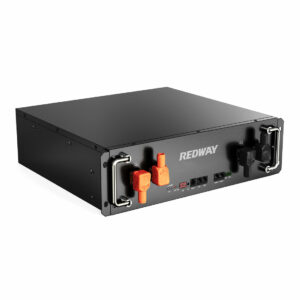How much does Generac PWRcell cost?
The Generac PWRcell system typically costs around $20,000 for a base configuration, though prices vary based on capacity and installation factors. The modular design allows expansion from 9 kWh to 72 kWh, with higher-capacity setups increasing the total cost. Pro Tip: Always factor in installation fees (often $2,000–$5,000) and regional incentives when budgeting for a PWRcell system.
What determines the cost of a Generac PWRcell system?

Generac PWRcell pricing hinges on battery capacity, inverter specs, and installation complexity. Base kits start at ~$20,000 for 9 kWh storage, while expanded 18 kWh configurations reach ~$35,000. Unlike monolithic batteries, PWRcell’s modular design lets users scale capacity incrementally—each 3 kWh module adds ~$3,500.
Technical specifications drive cost variations. The PWRcell 2 series (released late 2024) supports higher peak power output (5.1–10.3 kW) via its stacked inverters, requiring upgraded electrical panels in some homes—a $1,200–$3,000 add-on. Thermal management systems and UL9540 certification also contribute to ~15% price premiums versus non-modular competitors. For example, a 12 kWh PWRcell setup with two battery cabinets and solar integration might cost $28,000 before incentives. Pro Tip: Pairing with Generac’s proprietary Smart Management Module optimizes energy use, preventing overspending on unnecessary capacity.
How does Generac PWRcell compare to competitors?
Generac’s modular approach positions PWRcell between Tesla’s Powerwall and Enphase’s IQ Battery in pricing. While Tesla offers lower upfront costs (~$12,000 for 13.5 kWh), Generac provides superior scalability—its 72 kWh maximum capacity outperforms Powerwall’s 40 kWh limit for large homes.
| Feature | Generac PWRcell | Tesla Powerwall+ |
|---|---|---|
| Base Price | $20,000 | $12,000 |
| Scalability | 9–72 kWh | 13.5–40 kWh |
| Peak Output | 10.3 kW | 7.6 kW |
Real-world testing shows PWRcell maintains 95% efficiency during 5-second surge loads (like AC startups), versus 88% for Enphase systems. However, its lithium-nickel-manganese-cobalt (NMC) chemistry requires more frequent balancing than Tesla’s LFP cells—expect annual maintenance costs of $150–$300. Pro Tip: Choose NMC if prioritizing power density over cycle life in regions with frequent grid outages.
What installation factors affect PWRcell pricing?
Electrical infrastructure upgrades often add 10–25% to PWRcell’s sticker price. Homes requiring 200A service panel upgrades pay ~$2,500 extra, while subpanel installations for battery clusters cost $800–$1,500. Permitting fees vary widely—California’s Title 24 compliance adds $1,200+ versus $300 in Texas.
Roof-mounted vs. ground installations also matter. Ground-based PWRcell setups need concrete pads ($600–$1,200) and trenching for power lines ($75–$150/ft). In snowy regions, heated enclosures ($1,800+) prevent capacity loss below -4°F. For example, a Vermont homeowner paid $26,500 total for an 18 kWh system with frost protection—23% above baseline pricing. Pro Tip: Always get three site surveys—installer expertise varies wildly in emerging battery markets.
RackBattery Expert Insight
FAQs
Does Generac PWRcell qualify for tax credits?
Yes—30% federal tax credit applies to installed costs. Combine with state rebates (e.g., CA’s SGIP) to save up to 50%.
Can PWRcell power entire homes during outages?
With proper load management—18 kWh systems run 240V appliances for 8–12 hours. Add solar to extend indefinitely.



